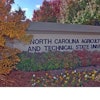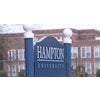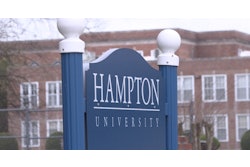Black-and-Brown Listed?
Colleges’ removal from magazine’s ranking leaves some confused, disappointed
By Pearl Stewart
DURHAM, N.C.
For North Carolina Central University, the news was gratifying. Known for its ability to transform disadvantaged students into successful professionals, NCCU welcomed the national publicity and recognition. So when Kiplinger’s Personal Finance magazine placed the institution at No. 49 on its list of the 100 best values in public colleges, the press releases started flying.
“We released the information to our local and national media contacts, a total of 60 media outlets, and we put an article on our Web site,” says Sharon Saunders, Chancellor James Ammons’ special assistant for public relations. NCCU’s student newspaper, ran the story on its front page, and an article appeared in the Durham Herald-Sun.
Administrators on other campuses were mounting similar publicity campaigns as a result of their positions on the list, but for NCCU and two other historically Black institutions, the rankings were especially significant. For the first time in Kiplinger’s six years of compiling the list, three historically Black colleges and universities appeared in its Top 100. North Carolina A&T State University was ranked 94, and Elizabeth City (N.C.) State was 96.
The schools were basking in the publicity surrounding the rankings — until they received letters from Kiplinger’s Personal Finance editor Fred W. Frailey informing them it was all a mistake. The letters were dated Oct. 17, 2002, weeks after the issue went into circulation.
“Unfortunately, despite our intentions, mistakes do occur,” Frailey’s letter stated. “… We uncovered an error in our computerized scoring process that allowed six schools, including yours, to avoid elimination in our original criteria for reported standardized test scores.”
The other schools were not mentioned in the letter, but Kiplinger’s later released the names of two of them — Montclair State University (84) and California State University at Fresno (54), both of which have significant Black and Hispanic enrollment. North Carolina Central, at 49, was ranked highest among those removed from the list.
The sixth university that was slated to be excised from the list remained a secret — because after further review it was allowed to remain on the list.
According to the article, the magazine received its data from Wintergreen/Orchard House, a division of Riverside Publishing “which gathers statistics each year on more than 600 four-year public colleges and universities around the country.” Frailey explained in his letters to the schools that the minimum threshold should have been an average combined SAT score of 1030. The schools were told that their 2001 freshman SAT scores fell below the threshold, and that they should not have made the first cut.
Brian Knestout, associate editor and writer of the Top 100 article, said the rankings “are two-thirds quality and one-third cost. We’re trying to provide a tool for people looking for value and quality.” Knestout says the schools that were erroneously included had very high scores “on some other quality points, and if weren’t for the SAT scores, they would have remained on the list.”
Taking corrective action
The editors realized there were problems with the rankings when they began receiving queries from readers, particularly administrators of schools that didn’t make the list but whose freshmen had higher exam scores than those listed.
The corrective action Kiplinger’s editors chose to take led to confusion: first, the magazine corrected the list on its Web site but editors also left text mentioning the schools that had been removed from the list.
For example, a sidebar praising North Carolina Central’s relatively low out-of-state costs remained on the Web site. “We couldn’t understand why they left us in the story and took us off the list,” Saunders muses.
Frailey’s letter said a correction would be published in the January 2003 issue of the print publication.
Meanwhile, at Montclair State University in New Jersey, Bob Quarteroni, director of public relations, did not seem as concerned as his counterparts. “We already knew there were problems with the list because a bunch of other indicators were wrong,” Quarteroni recalls. The first thing he and his colleagues noticed was that the magazine listed their undergraduate enrollment at 5,719; it is actually 10,939.
So Montclair State held back on a media blitz and when Frailey’s letter arrived, it garnered little more than a shrug. Quarteroni says Montclair State has made the U.S. News and World Report’s list of best colleges and Hispanic Outlook in Higher Education’s list of Top 100 schools graduating Hispanics and “prides itself on being a multicultural Mecca. We’re not really concerned about being taken off Kiplinger’s list.”
A similar response came from North Carolina A&T State president Dr. James C. Renick. “We have no evidence that our parents or students use Kiplinger’s in making a decision about attending or taking advantage of an A&T education.”
And from Elizabeth City State, Kesha Williams, assistant director of public relations, says the university immediately stopped promoting its ranking when Frailey’s letter arrived. “We’re on the U.S. News list, which is more comprehensive,” Williams says.
But even those who weren’t upset about the miscalculations contend the matter should have been handled differently. Saunders says an update on the Web site would have reduced confusion about why the online list was different from the print version. And several administrators suggested that after the errors were discovered, the affected schools should have remained on the list, to spare them the discomfiture of having to “unannounce” their rankings.
But Knestout admits, “It was quite a train wreck. We’re distressed that we caused these colleges any embarrassment.”
© Copyright 2005 by DiverseEducation.com















